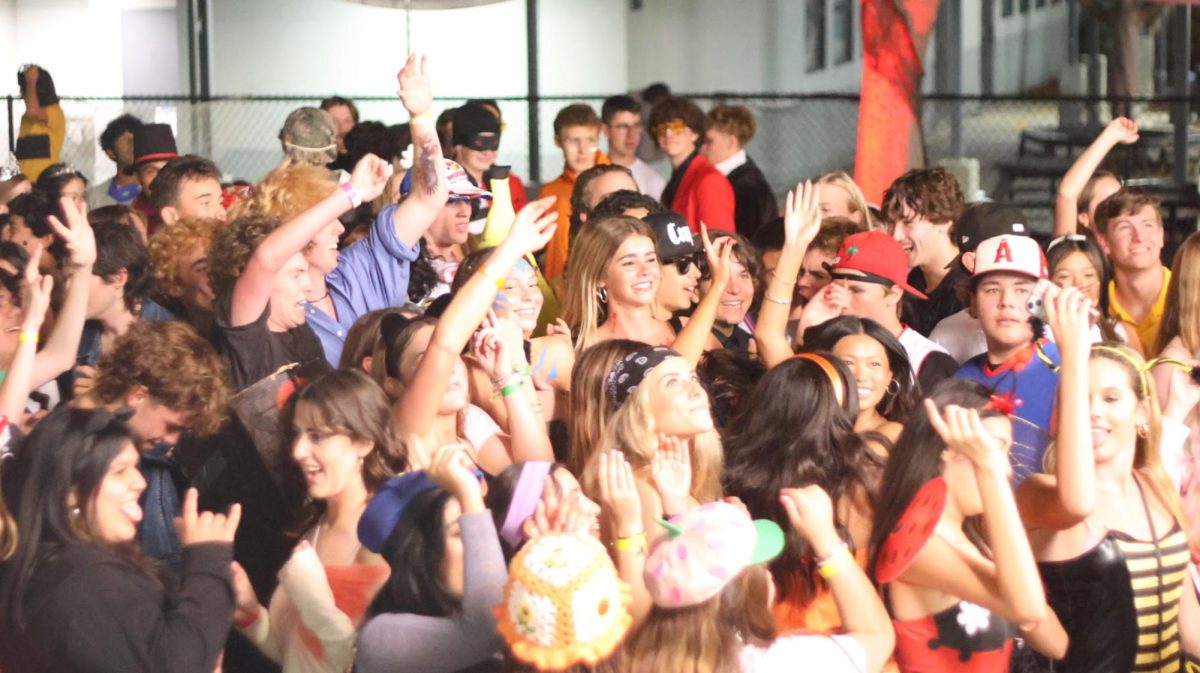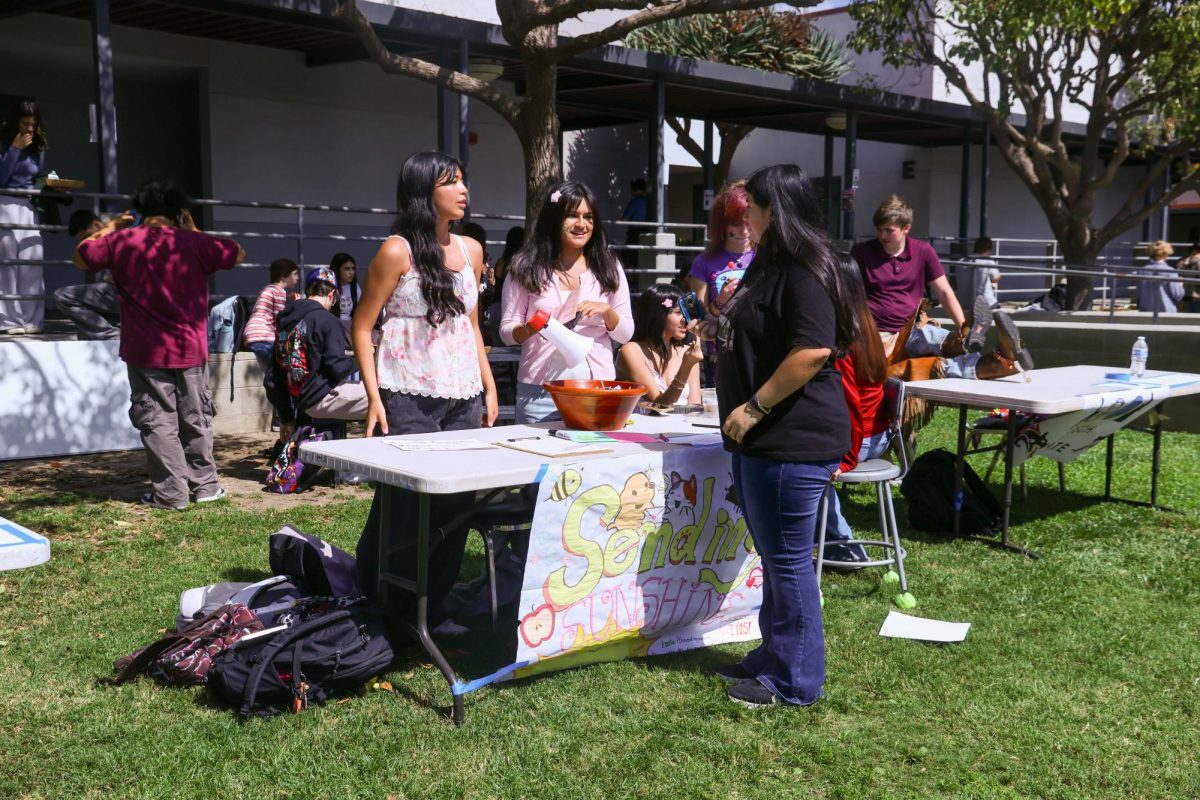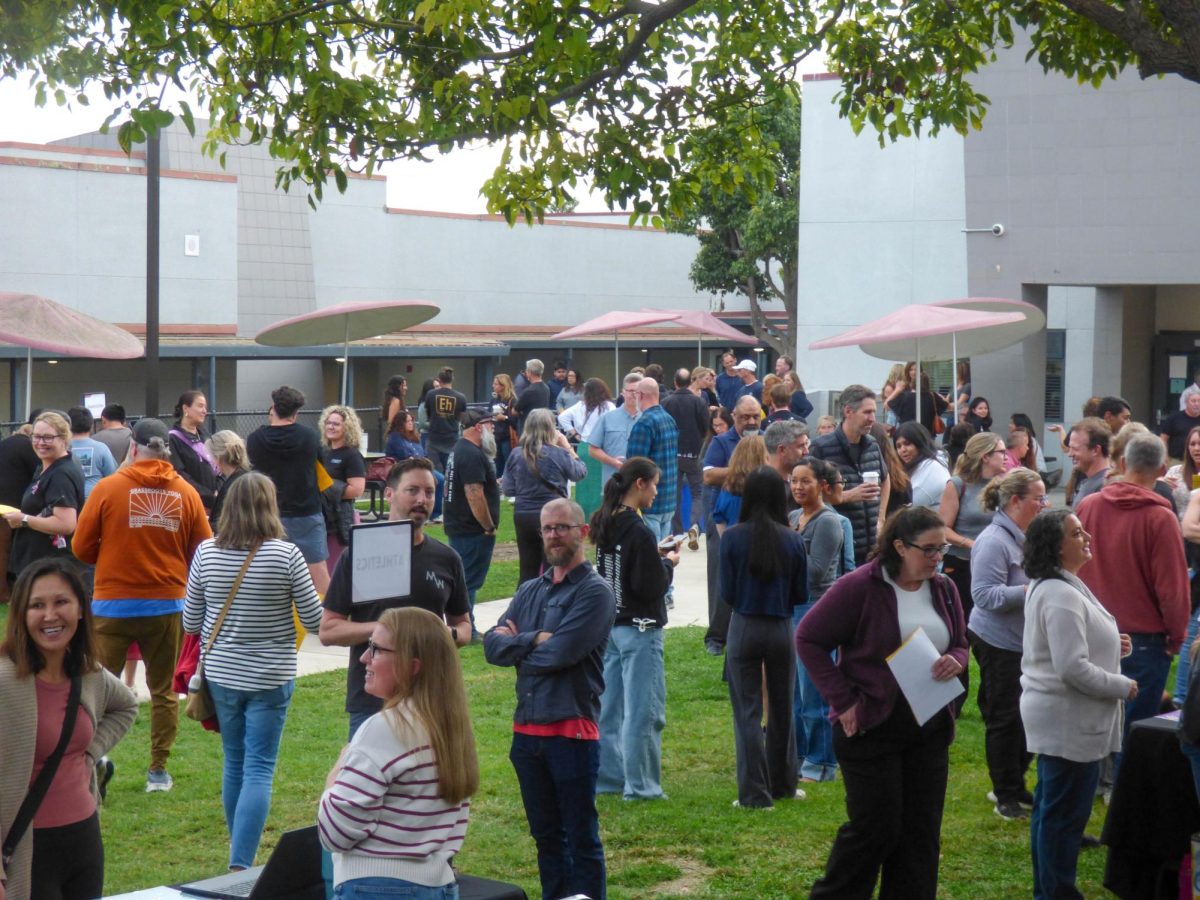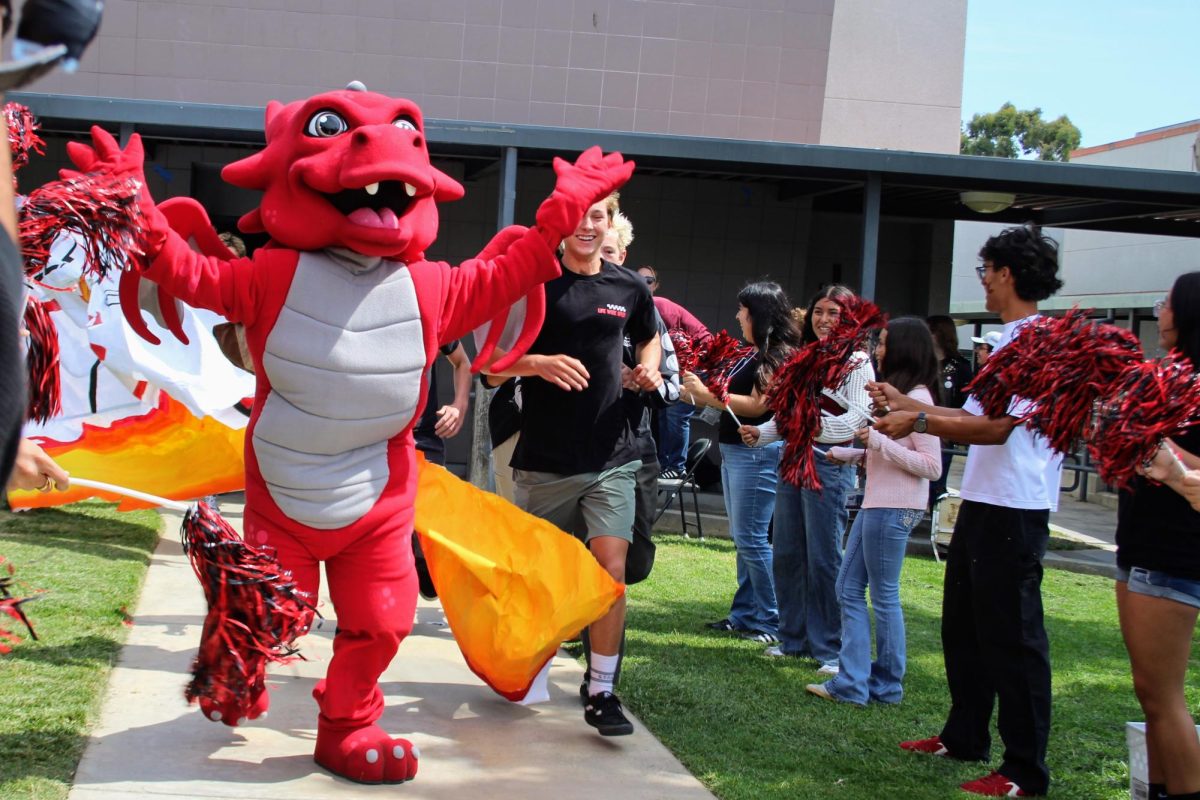For weeks the students in the conceptual physics classes have been working on tennis ball launching projects. This week, they finally got to see their work pay off. They used their contraptions to launch tennis balls at targets that were 2 to 6 meters away.
……………
For weeks, the students in the conceptual physics classes have been working on tennis ball launching projects. This week, they finally got to see their work pay off. They used their contraptions to launch tennis balls at targets that were two to six meters away.
The goal was for them to be as accurate as possible, so they had been working with their projects for a while.

“We’ve practiced with it for a week and a half. Instead of just coming in and doing the one launch, we’ve done calibration and then we did a lab using their launcher. And then we played a game where we tried to catch it in a cup,” conceptual physics teacher Macie Vega said.
To calibrate their launcher, they had to calculate how much force needed to be applied to the contraption for the tennis ball to be launched a specific distance.
Students were encouraged to get creative on this project. Some used items like skateboards, ladles, tent poles and diving belts.
Overall, students enjoyed the experience of being able to do a hands-on project.
Sophomore Karl Roth said the project was “actually fun.”
“Conceptual physics is a really fun class. I mean there is a whole bunch of projects that you do,” Roth said.
“Building the whole thing was really fun. I got to work with tools I don’t usually work with,” sophomore Jordan White said.
This project gives students a chance to see the forces they learn about in class in action.
“It’s helped us see how much force you can apply to shoot something a certain length,” sophomore Michelle Gurrola said.
Students are graded on their team work, creativity and ingenuity, their calibrations and the accuracy of their contraption.
This year’s project is different from previous years because the project had to conform to the Next Generation Science Standards. A large focus of the standards is engineering.
[soundcloud url=”https://api.soundcloud.com/tracks/225318533″ params=”color=ff0000&auto_play=false&hide_related=false&show_comments=true&show_user=true&show_reposts=false” width=”100%” height=”166″ iframe=”true” /]
Vega said that the project “meets a lot of the engineering standards where they’re supposed to be designing and building and testing things.”
This year they also did the majority of the building work in class. They only took theirs home if it needed to be finished. This added to the emphasis on the engineering process because Vega could watch their progress and give them feedback while they worked.
“That’s the big shift in the new science standards. It’s not just one big learning material now it’s a lot more hands-on. Them trying out their own ideas and building it themselves and testing it themselves,” Vega said.
Background Photo Credit: Grayson McCoy/The Foothill Dragon Press









